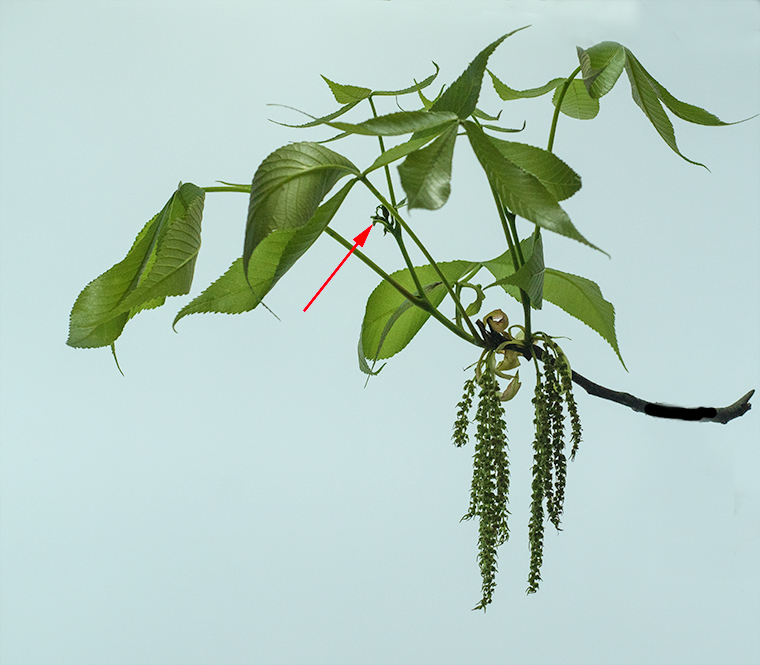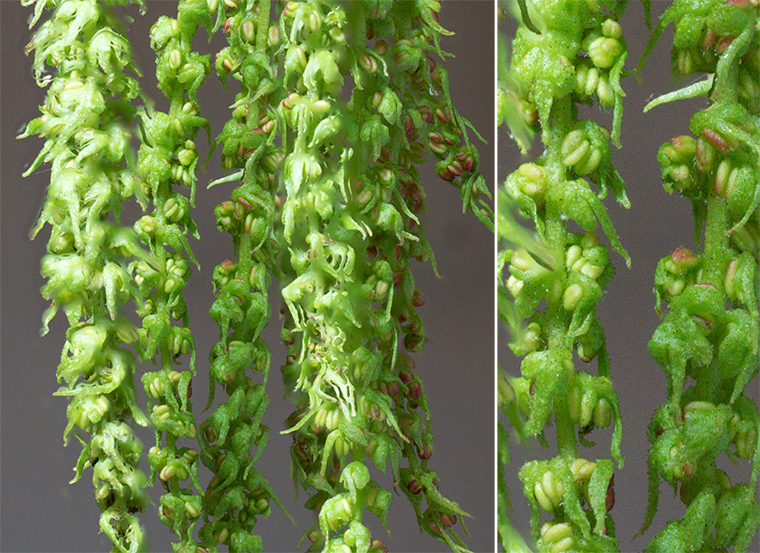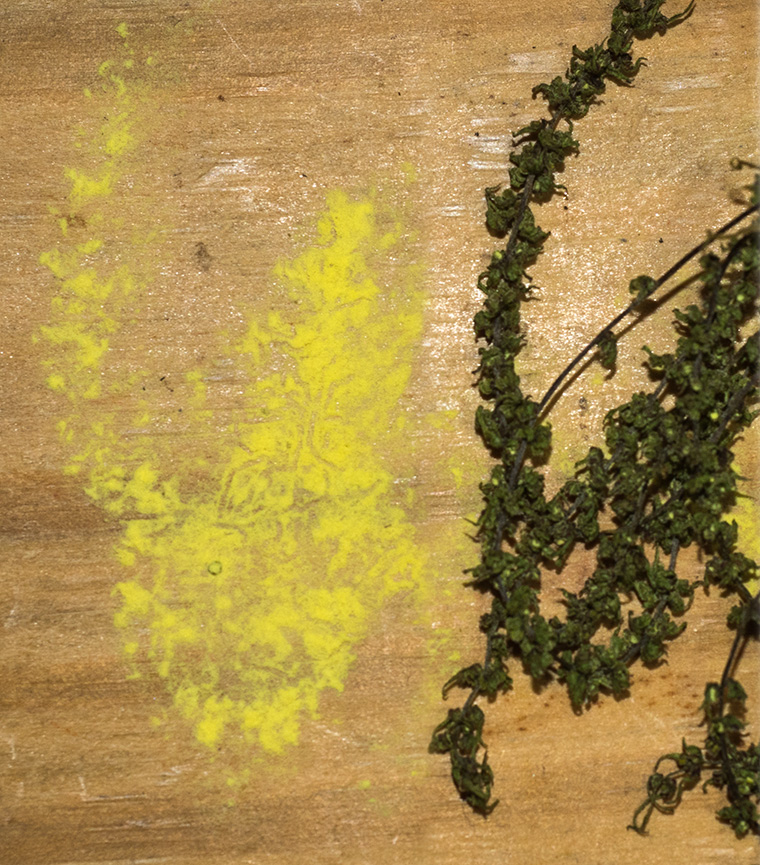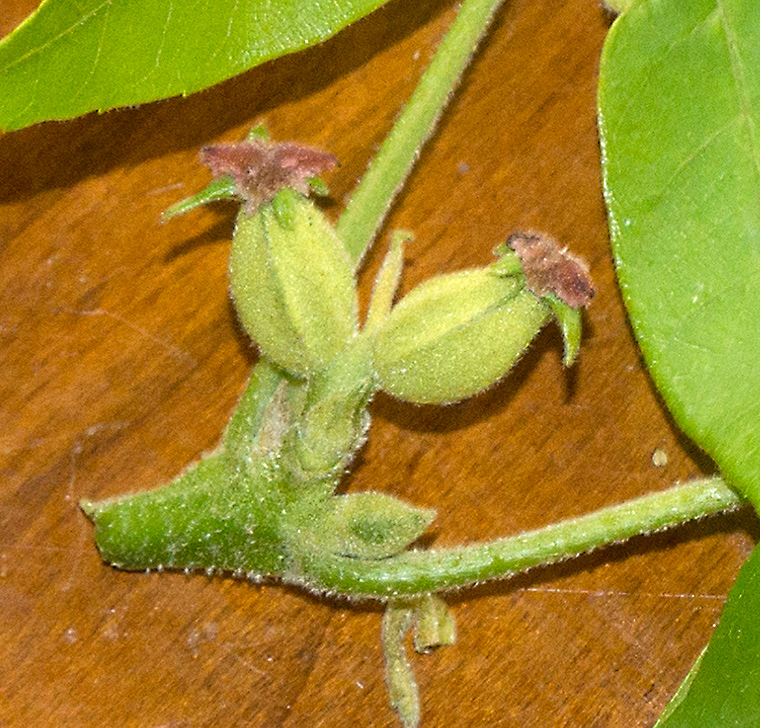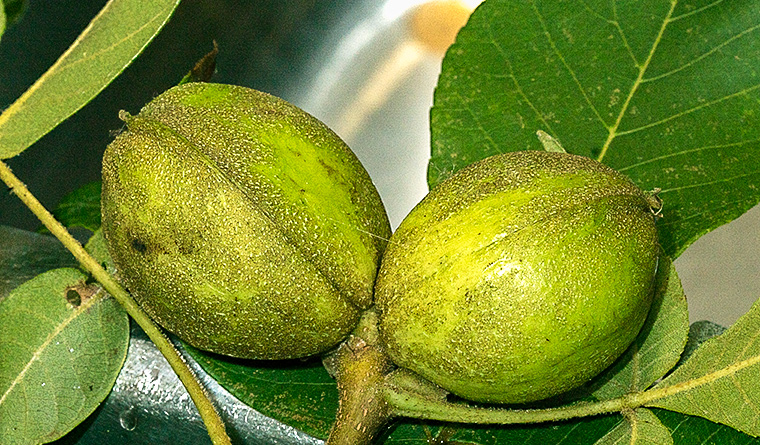This year I found a flowering Shagbark Hickory (Carya ovata) branch that was low enough to reach. Usually they occur so high in the trees that I have no access. Hickories have unisexual flowers, but both the male and female flowers are present on the same tree (unlike hollies or poison ivy, which have separate male and female plants.) Hickory male flowers are the long stringy structures hanging down from the branch. The small female flowers are much less conspicuous. I have indicated the female flowers with the red arrow in the photograph above.
Hickories are wind pollinated. This means that the flowers do not need conspicuous structures, such as brightly colored petals, to attract insects, hummingbirds, or other pollinators. However, wind pollinated plants must produce a lot of pollen. This is understandable. Pollen must be cast into the wind and by chance land on the stigma of the female flower. The strings of male flowers are called catkins, presumably because they resemble the tail of a cat. They are structured to produce a large amount of pollen and then fall off the tree. Many wind-pollinated trees produce catkins similar to those of the hickory.
These photographs show detail of the catkins. The small yellowish structures are stamens full of pollen.
I let some of the catkins dry out and release their pollen on my workspace. This photograph shows the massive amount of pollen released by a few catkins.
Young female flowers of a hickory are shown above. The fuzzy red structures at the distal end are the stigmatic surfaces. Pollen must land on these for successful fertilization and the development of a nut. The other large round and pointed structure under the female flowers is an axillary bud.
I took this photograph last fall to show the final stage in hickory nut formation. In this case successful pollination and fertilization occurred and a nut was formed from each female flower.
.
Discover more from A Naturalist's Journal
Subscribe to get the latest posts to your email.

